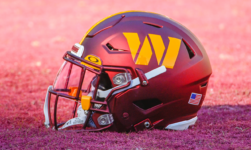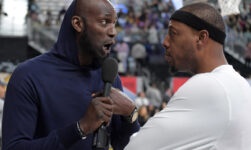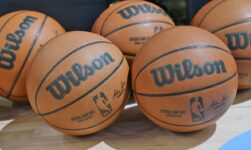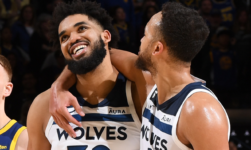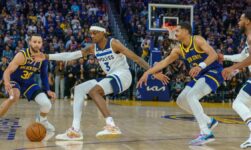The premise of this entire series of offseason previews is based on identifying each team’s plan. While there are often more interesting questions about what a team should do, any cogent offseason predictions are based on figuring out what a team actually wants to do, and whether or not those plans are achievable. Philadelphia was always going to be especially difficult in that respect. Do the 76ers really look like a team with a plan?
Nothing about their moves since drafting Ben Simmons suggests that they have one. In the past four seasons, the organization has overgone at least five directional shifts that can and should be categorized as overhauls:
June 2017 — They traded up to No. 1 in the NBA Draft to take Markelle Fultz, ostensibly replacing Ben Simmons as the team’s primary offensive creator before he played a single game. May 2018 — The Ringer published a story that led to the resignation of Bryan Colangelo as general manager. Colangelo had already replaced the deposed Sam Hinkie. Elton Brand was elevated to general manager. November 2018 — The 76ers traded for Jimmy Butler, an All-Star, but a pending free agent. Less than a month earlier, the 76ers had committed to starting Fultz and letting him work through his shooting issues. Butler, another non-shooter, forced Fultz onto the bench. The former No. 1 overall pick was dealt at the trade deadline. February 2019 — The 76ers traded for yet another pending free agent, Tobias Harris, signaling disappointment in the Butler experiment. Sure enough, Butler departed in July. July 2019 — The 76ers swapped out Butler and JJ Redick, their best 3-point shooter, for Al Horford, another big man, and Josh Richardson, another ball-handler. Simmons and Joel Embiid were the only two starters left from the beginning of the 2018-19 season.
There has been nothing cohesive about what Philadelphia has done over the past four seasons. No move has correlated with any other, and it has left the once asset-rich 76ers brittle, capped out and lacking trade chips. Simmons and Embiid are all that remain from this bout of organizational whiplash, but hope has emerged over the past month purely by chance.
Few expected the Clippers to fire Doc Rivers even after they lost to the Denver Nuggets. Fewer expected Daryl Morey to leave the Houston Rockets after a 2019 contract extension, and fewer still expected him to return to basketball so quickly after leaving the Rockets when all indications at the time suggested that he planned to take time off to spend with family and explore other interests. Yet here we are, weeks away from the NBA Draft, and the 76ers have upgraded from one of the NBA’s worst coach-GM combinations to one of its best overnight. Say what you will about Rivers’ recent postseason miscues, but he is now one of only eight NBA head coaches with a championship ring. Morey doesn’t have one, but he has always indisputably had a plan.
The goal of this exercise will be figuring out what that plan will be in Philadelphia. The 76ers have seen their fortunes decline drastically over the past few seasons, but neither Rivers nor Morey would have taken these jobs if they believed their championship window had closed entirely. The 76ers will make a push to contend right away. Now we just have to figure out how they’re going to do it.
One note before beginning: We will be using Spotrac for player salaries, and 2019-20 cap numbers for this exercise as a whole. That includes previously agreed-upon numbers like the rookie scale and the minimum salary. A frozen cap is the likeliest outcome of negotiations between the league and the NBPA, but these numbers could theoretically change in either direction.
Under the assumption that the 2019-20 numbers will be used, these are the pertinent numbers for these projections.
Salary cap
$109,140,000
Luxury tax
$132,627,000
Luxury tax apron
$138,928,000
Salary floor
$98,226,000
Non-taxpayer mid-level exception (Year 1)
$9,258,000
Taxpayer mid-level exception (Year 1)
$5,718,000
Cap room mid-level exception (Year 1)
$4,767,000
Bi-annual exception
$3,623,000
Cap situation and overall finances
At this moment, the 76ers have the NBA’s most expensive roster. With four empty roster spots left to fill, Philadelphia is around $18.6 million above the projected luxury tax line. That sets it up for a colossal tax payment of $40.5 million. Add four veteran’s minimum deals to the equation and that balloons even further, all the way up to $64.2 million. Money is going to be a concern here.
Players
2020-21 Salary
Tobias Harris
$34,358,850
Ben Simmons
$30,559,200 (estimated)
Joel Embiid
$29,542,010
Al Horford
$27,500,000
Josh Richardson
$10,865,952
Mike Scott
$5,005,350
Zhaire Smith
$3,204,600
Matisse Thybulle
$2,711,280
Furkan Korkmaz*
$1,762,796
Shake Milton
$1,701,593
Norvel Pelle*
$1,517,981
No. 21 pick
$2,478,840
Total
$151,248,452
*non-guaranteed
(For an explanation of why Simmons’ salary is estimated, see the Jamal Murray paragraph in the Nuggets preview.)
Philadelphia will probably try to trim money on the margins. This is the team that tried to force pay cuts on its employees early in the pandemic, after all. But wholesale salary slashing probably isn’t in the cards. For all of this ownership group’s flaws, it has always been willing to invest in winning. While coaching and front-office hires are uncapped, it should be noted that the Morey-Rivers duo is probably the most expensive in all of basketball. Both were among the highest-paid people in their positions before joining the 76ers, and both had plenty of leverage in negotiating their new positions.
The greater priority will likely be shedding long-term money. Simmons, Embiid, Horford and Harris are all signed for at least three more seasons. The repeater tax kicks in after a team has paid the tax three seasons in a row, or in four out of five. Philadelphia would probably prefer to avoid that fate. Even Golden State, winners of three championships in four years and still expected to contend, took steps to avoid that fate last season. Without a championship-caliber roster yet, the 76ers are probably in the same boat. They don’t need to avoid the tax yet. They just need to do it soon.
In no scenario do they have cap space, and sign-and-trades are fully off the table, as they hard cap teams at the apron. Philadelphia is already far above that figure. Aside from the minimum, its only possible free-agent chip is the taxpayer mid-level exception. A ball-handler would be nice, but there isn’t one in their price range. D.J. Augustin is not going to play crunch time for this team. That should force the Sixers to target a shooter if they use this exception at all. This class is lacking in that respect. Most of the best shooters, at least relative to their position, are the big men. Davis Bertans, Aron Baynes and Serge Ibaka are too expensive. Maybe Meyers Leonard isn’t, if Morey is willing to invest in yet another center. Bryn Forbes and E’Twaun Moore are possible guard fits, but watch for the 76ers to canvass the trade market before free agency and base their moves on what they find. Fortunately, they still have some draft picks left to use on that front.
Draft capital
2020 picks: Nos. 21, 34, 36, 49, 58Owed future first-round picks: N/AIncoming future first-round picks: N/A
Colangelo and Brand may have burned through Philadelphia’s stock of incoming first-round picks in their ill-fated trades, but Hinkie left the 76ers one gift even they couldn’t squander entirely: six remaining second-round picks originally belonging to other teams, including three in November. This will be absolutely critical for the 76ers financially, as second-round picks aren’t bound by the rookie scale. Typically, they make the minimum, and the rookie minimum is significantly smaller than the veteran’s equivalent. If Philadelphia adds four minimum-salary rookies as opposed to veterans for those last four roster spots, they would save approximately $11 million in tax payments based on the other 11 players currently on their roster. The reality will probably be a mix based on everything else the 76ers do.
More pressingly, there is the matter of the No. 21 pick to discuss. While free agency is somewhat light on point guards, the position is strong in the NBA Draft. The LaMelo Ball-Killian Hayes-Tyrese Haliburton tier is probably out of reach, but the next group all make some degree of sense for the 76ers. Tyrell Terry is the perfect theoretical answer to their shooting woes. He can hit shots from practically anywhere, even if it isn’t clear what else he’ll be able to do in the NBA. Cole Anthony has star-caliber upside, and Morey, above all else, is a star-hunter. He’s going to take time, though, and the 76ers need help now. Tyrese Maxey is the two-way option on the board, and should be able to do a bit of everything offensively. Kira Lewis is too talented to ignore, even if the fit isn’t ideal. Some combination of that group is going to be available. Philly is probably going to take one.
It’s very important that the Sixers get that pick right. They’re going to need cheap contributors given the exorbitant expense of this roster in the near future, and, frankly, the likelihood that they are about to trade some future picks in the interest of immediate winning.
Trade options
We’ll start with the obvious: Will the notoriously aggressive Morey break up the Simmons-Embiid duo? The answer is probably not, at least for now. Little from Morey’s history suggests that he’s philosophically opposed to non-shooters or big men. He signed Dwight Howard to a max contract, after all. His strategy has always focused on the accumulation of talent. Questionable fits like Ty Lawson and Carmelo Anthony were home run swings that didn’t pan out, but it’s not as though Morey stopped trying to make them. He offered four first-round picks for Butler, yet another non-shooter. He wants superstars. He has two in Embiid and Simmons. It shouldn’t be viewed as overly likely that he breaks them up out of principle before seeing them up close.
Now, would Morey do it for the right deal? Sure. But the right deal isn’t available yet. The name you’ll almost certainly hear is James Harden, and justifiably so. Houston is in a position in which its future likely hinges on a Harden trade before the 2021-22 season, and Morey probably wouldn’t mind reuniting with the star that once saved his job. But Rockets owner Tilman Fertitta has made it clear that Harden isn’t available yet, and without a 2021 first-round pick, Houston has no reason to try to tank. A Harden trade may come down the line, but right now, it isn’t on the table. The same can’t be said for another of Morey’s former All-Star point guards.
Chris Paul could not be a more perfect fit for the 76ers. Simmons needs space to work? He’s a 37 percent 3-point shooter for his career. Kemba Walker averaged 24 points per game in a first-round sweep? That’s not happening against Paul and his nine All-Defense selections. Philadelphia needs someone to generate late-game offense? Paul led the NBA’s No. 1-ranked clutch offense in Houston, got hurt, and then did it again in Oklahoma City. His success alongside Shai Gilgeous-Alexander and Dennis Schroder suggests he could fit with Simmons. He doesn’t need the ball on every possession, even if he should probably have it.
If it were up to Morey, Paul may never have even been sent to the Thunder. There is ample evidence suggesting that Fertitta was the driving force behind the Westbrook trade. While Morey isn’t as dogmatic about shooting as some suggest, he isn’t exactly the type to trade a shooting star for one that needs the ball to be effective. ESPN’s Tim MacMahon described Morey as “the biggest Paul backer in the organization.”
Despite a similarly ugly breakup with Rivers, Paul’s former coach has stated that the two have resolved their issues. Paul even invited Rivers to speak to the players in the bubble after the Milwaukee Bucks instigated a wildcat strike in the first round of the postseason. The structure is far from identical, but this Philadelphia roster shares some similarities with the one Paul and Rivers shared in Los Angeles. Simmons could fill the Blake Griffin role as an elite athlete and passer for his size. Embiid is better than DeAndre Jordan ever was, but those Clippers teams used two non-shooters in the frontcourt, and this theoretical Philadelphia team could as well.
There are even financial arguments in favor of such a trade. While Paul’s salary is enormous right now, his contract only has two remaining seasons. If the 76ers manage to swap one of their long-term deals for his, they could conceivably let his deal expire and avoid the tax altogether in the critical 2022-23 season, ducking the repeater penalty entirely.
That plan, of course, is no given. Moving Horford or Harris would be difficult at best, and might not even be possible. The 76ers would have to pay a premium to convince Oklahoma City to take the three years remaining on Horford’s pact. Harris might need to be rerouted elsewhere. The Thunder aren’t taking on four years of Harris with Darius Bazley entrenched in his position.
Where could we send Harris? The Philadelphia Inquirer‘s Keith Pompey reported that Brooklyn, Utah, Sacramento, Indiana and Dallas would be interested in Harris in free agency last offseason before he ultimately re-signed. The Nets reeled in two bigger fish and the Mavericks hope to do the same with Giannis Antetokounmpo next summer. Indiana is a possibility, and is interested in Gordon Hayward as well, but T.J. Warren’s emergence in that same archetype probably rules them out. The Jazz with Bojan Bogdanovic and Sacramento with Harrison Barnes are the two most realistic salary-matching partners here, but both would probably need assets to consider that swap.
Horford is likelier here as Oklahoma City would have a use for him. His shooting, passing and screening are powerful developmental tools for young perimeter players. Go ask Jaylen Brown and Jayson Tatum how much they enjoyed growing up under Horford’s wing. He can play power forward, but as last season proved, he’s more valuable at center, and if the Thunder trade Paul, they’d have an excuse to extract some value out of Steven Adams in another trade as well. There is an argument to be made that Horford is simply too far past his prime to be anything other than a completely toxic asset, but the same was said about Paul 16 months ago. How’d that turn out?
All of that being said, the Thunder aren’t taking Horford out of the kindness of their hearts. He has a far worse contract than Paul, and that creates a two-pronged trade conundrum. The Thunder would justifiably ask for value on multiple fronts: some for giving up Paul, who is a positive-value asset at this point, and some for taking on Horford, who is negative right now. That’s a tough pill to swallow here, but if there’s a team desperate enough to pay that price, it’s the 76ers. They’re somewhat well positioned to do so as well. Brand and Colangelo may have set Hinkie’s extra first-round picks on fire, but Philadelphia’s own picks are still there. If the Thunder prefer players to more draft picks, Matisse Thybulle is a Defensive Player of the Year candidate waiting to happen.
The 76ers wouldn’t want to give him up. They’d like to hang onto their picks as well. But that is a privilege years of mismanagement has deprived them of. The 76ers no longer have the picks or the cap flexibility to take the long view on Simmons and Embiid, especially in light of their health issues. Winning now isn’t just the logical response to long-term injury risks. It is the only option for a team that doesn’t have an obvious way of acquiring much more young talent. If the 76ers are in the lottery again any time soon, it means something has gone horribly wrong with the health of their stars. If they have cap space, it’s probably because they’ve traded one of them.
Could a Paul trade blow up in their faces? Absolutely. He’s 35 and has injury issues of his own. But the downside here is relatively low. After this season, Paul will be on an expiring contract. Is there a front-office exec in basketball better equipped to use that expiring deal to reshape a roster than Morey? Ironically, he could end up matching salary in a future Harden deal, should the Rockets make him available next offseason. Simmons and Paul for Harden and Eric Gordon is a realistic trade framework.
That’s the key point here. A Paul trade gives the 76ers championship upside, but he doesn’t take much off the table, either. A deal could function as a one-year flyer if necessary. Giving up assets for that would be less than ideal, but with two stars still in place and some leftover Hinkie picks in the cupboard, it’s more than manageable given the possible reward here.
Almost every move the 76ers have made since drafting Simmons has been in search of a third star. Fultz missed. Butler left. Harris underwhelmed. There shouldn’t be enough left in the war chest to take another shot at that guy, but Paul’s unique circumstances have created a once-in-a-lifetime shot at undoing the mistakes of previous regimes. Morey hunts for stars. Paul is the star they can get. It can be that simple.
Because Paul isn’t the only player in the NBA, let’s cover some other rapid-fire targets. They’re all shooters.
Buddy Hield: He’s the most sensible non-Paul target purely based on shooting, and Sacramento needs a center enough to consider Horford with other assets attached. New Kings GM Monte McNair worked for Morey in Houston. Such relationships often facilitate deals like this, and Hield hasn’t exactly been subtle about his distaste for the Kings. Redick: Both sides would probably like a mulligan on letting him go. Josh Richardson probably has to be in this deal for salary purposes, but his age makes him too valuable for a straight-up swap. Maybe something along the lines of Richardson and No. 21 for Redick and No. 13? Perhaps another young Pelicans shooting guard (Josh Hart, Nickeil Alexander-Walker) could be involved. Luke Kennard: Detroit quietly shopped him at the deadline, and his contract matches Mike Scott’s nearly exactly. If the 76ers can get a young shooter for picks, it’s worth exploring, though he’s due an extension they might not be able to afford. Scott and a second-round pick for Reggie Bullock: Sometimes it’s that easy. One other point guard, but he probably isn’t available — Philadelphia native Kyle Lowry: He fits for all of the same reasons as Paul, and if the Raptors want to get younger ahead of 2021 free agency, it’s worth a call.
Morey is working the phones for shooting as we speak. He may not need it out of his stars, but he’s going to find it somewhere.
What would an ideal offseason look like?
Trade for Chris Paul. That’s it. That’s the answer. Short of a blockbuster that isn’t immediately visible, Paul is the only player they could trade for that opens the 2021 championship window without closing it thereafter. At worst, he’s a one-year mercenary that gets flipped as salary ballast in a bigger trade next offseason. At best? He’s the key to a Philadelphia title.
We’ll assume that Horford and Thybulle are going to Oklahoma City to make this work. So are Scott and Zhaire Smith for salary purposes, and probably a future pick or two for good measure. Fine. Championship pushes are expensive. I mean that literally. This scenario has Philadelphia adding money and creating three new roster spots. We’ll assume, for ownership’s sake, that some financial corners are cut here in building the bench.
With eight roster spots filled, we’ll commit to the premise of starting the season with only 14 players on the roster and relying on two-way players in emergencies. The other cost-cutting measure we’ll start with is not using the MLE, but saving it for buyout season. At that point, ownership will have a better idea of whether or not going all-in is worthwhile. If it is, that exception becomes enormously valuable, as most teams can only offer the minimum for bought out players. With such a deep 2021 free-agent class looming and the likely flood of one-year deals this offseason, there will be valuable players available after the trade deadline.
We’ll split the six remaining roster spots in half: three veterans, three rookies (through those four second-round picks). Ideally, those veterans should include at least one shooter and at least one backup center, but Morey can get creative if the right talent is available. This plan would give the 76ers an opening day payroll of $161.7 million with an accompanying tax bill hovering around $80 million. That’s obviously an enormous price, but considering how much the 76ers are slated to pay anyway and how helpful offloading the last year of Horford’s deal would be, the talent upgrade is worth it.

